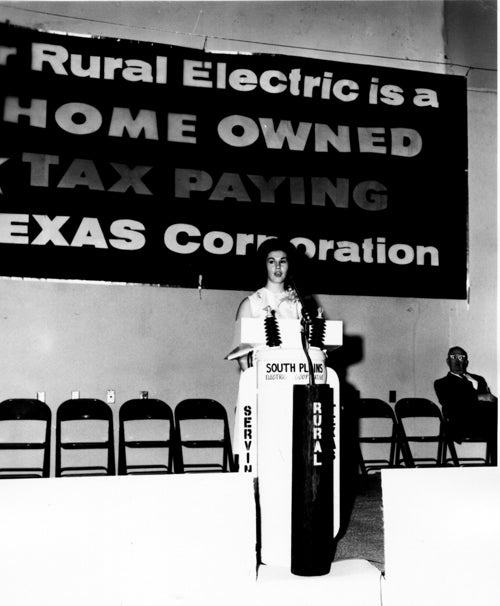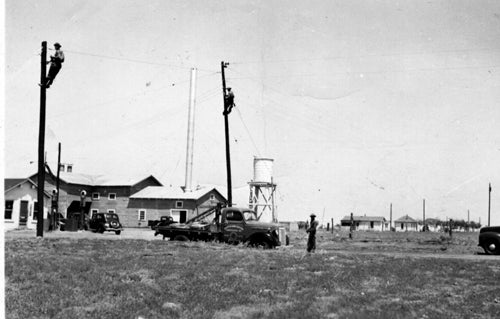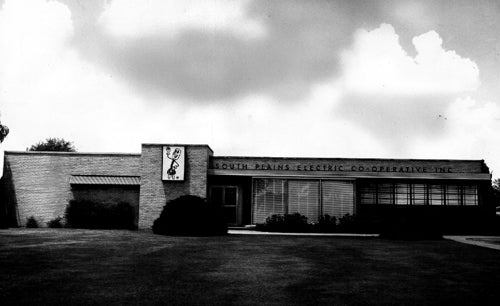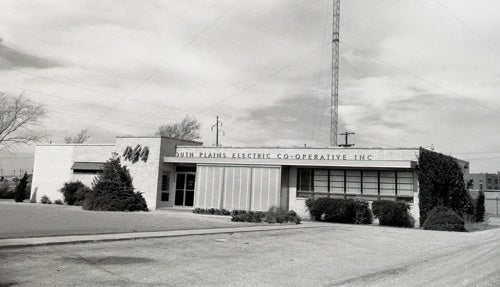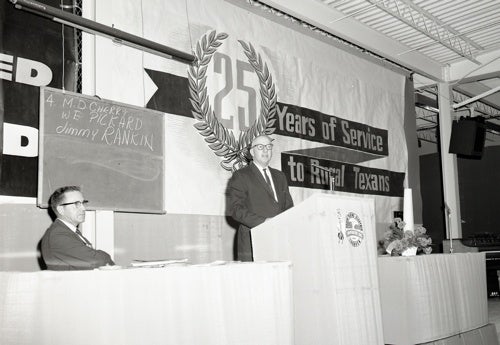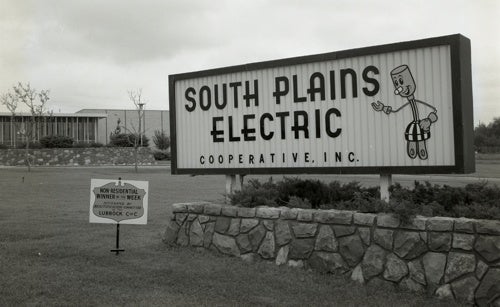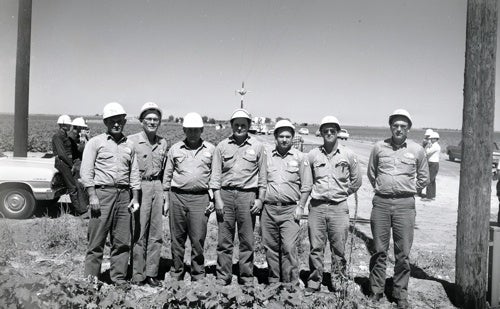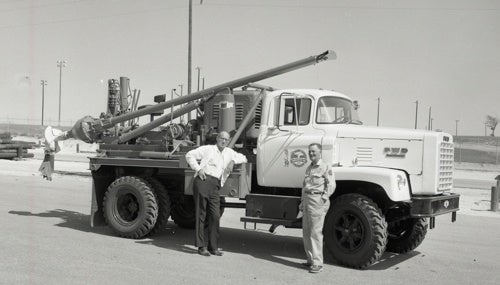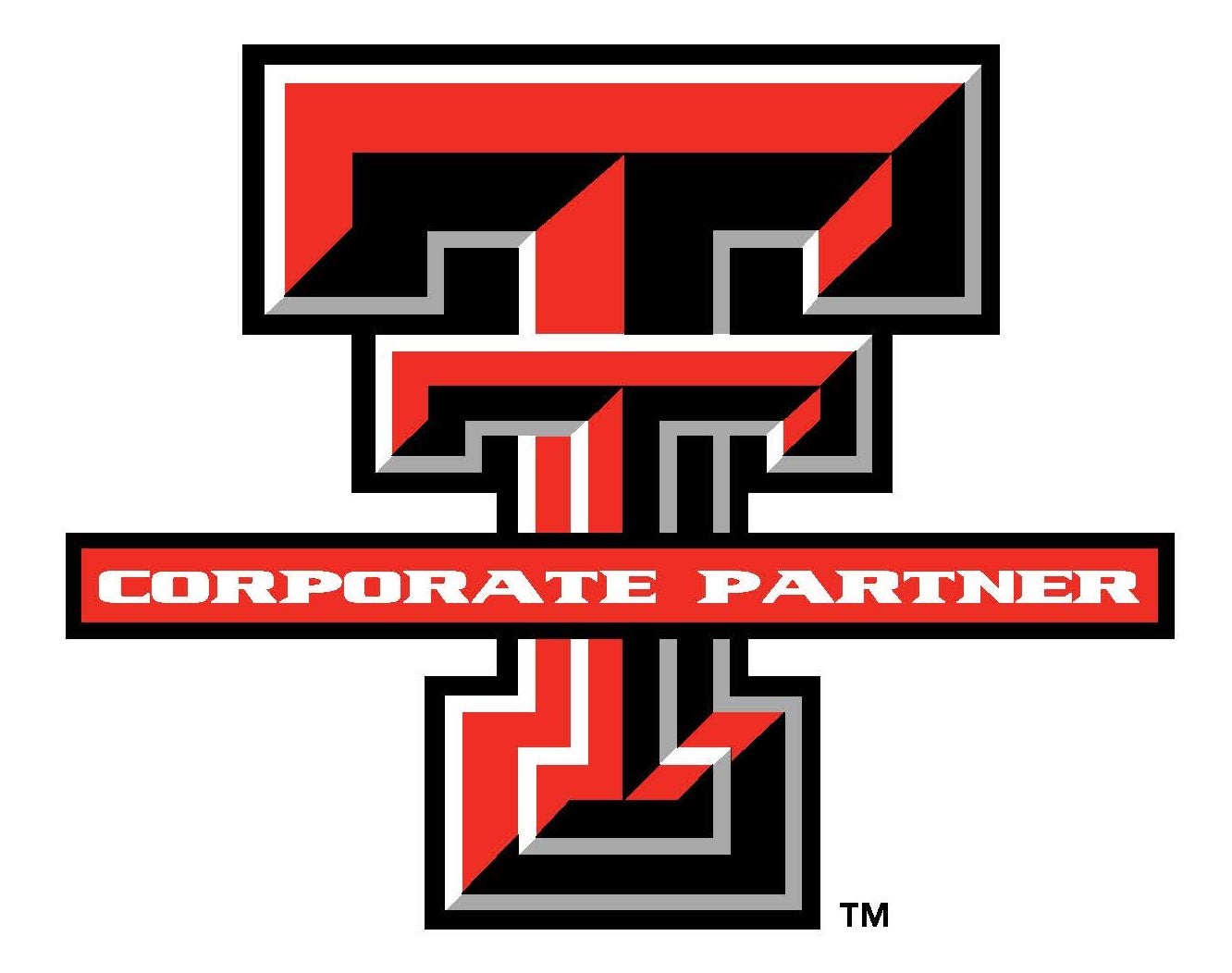On May 11, 1935, and pursuant to the authority of the Emergency Relief Appropriation Act of 1935, President Franklin D. Roosevelt established the Rural Electrification Administration (REA) by an executive order. Under this order, a sum of $75,000 was allocated to the new agency for administrative expenses.
Morris Llewellyn Cook, an engineer who had spent many years researching and investigating the need for rural electrification, was appointed as the first administrator for the REA.
On May 20, 1936, REA was passed making it a permanent agency of the Federal Government. A loan program was established making available long term, low interest loans to power companies, municipal electric systems, or electric cooperatives for extending electric service to rural areas and establishments not presently receiving central station electric service (electricity produced by large generating plants and delivered via wires to consumers). Few utility companies or municipal electric systems availed themselves of these loans because the expected revenue from the rural areas was much lower than from the cities, towns and urban areas. This left only one avenue for the rural dwellers. They formed their own electric system in the interest of service rather than profit.
The rural areas of the South Plains of Texas fell in this last category. There were approximately 2,700 farms in Lubbock County in 1937. Fewer than 30 of these were served with central station electric service. There were three incorporated towns and three unincorporated villages in the county that had electricity, as well as a few farm homes adjacent to them.
As early as 1936, several small groups of farmers became interested in the REA program. In 1937, a county-wide effort was started to electrify the rural areas. This effort coincided with interests shown in neighboring South Plains counties. There is little information left of these efforts before the time South Plains Electric Cooperative incorporated in late November 1937. This information was collected from persons who worked toward getting electric service during those first days; from correspondence and documents in the Cooperative's files; from the files of the Cooperative's first attorney, L.A. Howard, now deceased; from the files of the Cooperative's first engineer, H.N. Roberts of Lubbock, Texas, and from the Texas Tech University's file of local newspapers for the 1936-1937 period.
The first definite record that could be found of South Plains farmers trying to get electricity through the REA loan program was a letter from E.A. Manning, of Lubbock, writing to REA in Washington to request complete information on rural electrification. Mr. Manning's letter was dated September 30, 1936, and was answered on October 15, 1936, by N.L. Harfield, chief correspondent of the newly formed government lending agency. Harfield's letter to Mr. Manning included instructional literature about applying for a loan and accomplishments of REA. One interesting thing noted in the letter to Mr. Manning is the following excerpt: "To be financially self-supporting, a project should include at least twenty-five miles of line with an average of three customers per mile."
Although Mr. Manning, the first known correspondent, lived in Lubbock, he owned farm property in Southwest Lubbock County. At or about this time, a group of farmers north of Lubbock, in the New Deal community, had become interested in the REA program. Two of the leaders of the New Deal group were S.S. Allcorn, a farmer, and W.O. Fortenberry, a gin owner and farmer. All correspondence between the New Deal group and REA have since been destroyed, making it impossible to determine the exact date they first attempted to get a REA loan.
The Manning group, southwest of Lubbock, submitted an application for funds to REA on November 17, 1936, to build 27 miles of line to serve 126 customers. The New Deal group submitted an application about the same time to serve approximately the same size project. Mr. W.M. Ross, first president of the Cooperative, and a Mr. J.T. Collie, a print shop owner and land owner, were also active in the southwest group.
There may have been some correspondence between a group of farmers in the Roosevelt Community in east Lubbock County and REA but this could not be definitely verified. M.H. Vardeman, a farmer in that community, and Roy Monk, the vocational agriculture teacher, were early workers in the movement, but their main contribution was early in 1937.
No loans were made in response to these 1936 applications. REA policy was becoming better established and its direction changed from the pursuit of small projects to larger undertakings that could support administrative organizations with paid managers, linemen and service personnel. However, those first small applications had stimulated some rural interest that made development on an area-wide basis easier to pursue the following year.
During the last days of 1936 and early in 1937, a most significant movement took place that materially hastened rural electrification in Lubbock County, the heart of the South Plains. A move started to organize Grange chapters in various communities. Rural electrification was the first project attempted by the local chapters. County chapters were also formed, giving liaison between local chapters.
The first record of Grange chapters being organized in Lubbock County was January 12, 1937. By February 11, 1937, four chapters had been organized in Slaton, Southwest Ward, Shallowater and Roosevelt.
Birth of a Cooperative
Although South Plains Electric Cooperative did not receive a charter or become a Texas corporation until late in 1937, it had its birth on Monday night, March 8, 1937, in the Lubbock Junior High School. There was a county-wide Grange meeting with about 70 members present. A temporary committee was elected and served until the organization was incorporated. Committeemen were as follows:
-
C.E. Lilley, Slaton
-
C.Z. Fine, Posey
-
Z.L. Evans, Shallowater
-
W.O. Fortenberry, New Deal
-
M.H. Vardeman, Roosevelt
-
W.M. Ross, Southwest Ward
-
Lewis Countess, Idalou
-
A.B. Allen, Cooper
-
N.A. Payne, Carlisle
The Committee chose "South Plains Electric Cooperative Company" as the name of the corporation. All committeemen, except Fortenberry, Evans and Payne later became incorporators and charter members of the Cooperative.
On April 27, 1937, H.N. Roberts submitted an application for a REA loan with supporting maps and data to the committee for approval. The application showed 1,081 survey blanks signed by Lubbock County farmers pledging to take electric service. The applications showed Lubbock County to have 2,600 farms without electric service. The application proposed the construction of 430 miles of electric lines to serve the 1,081 signers. REA acknowledged receipt of the applications on May 10, 1937, but informed the group that REA was out of funds until the next fiscal year beginning July 1, 1937.
Due to fund restrictions from REA, the application was revised to reflect needs that didn't exceed the $100,000. A contract proposal was negotiated with the City of Lubbock to purchase power from the municipal electric system. Finally, on November 5, 1937, John M. Carmody, administrator of REA, notified the committee that $100,000 was allocated, opening the way for electricity to South Plains farms. In many respects this was impressive--scarcely a year from the time some interest had been shown in the area, and only six months from the date of the first county-wide effort. All this was accomplished with no outlay of money by the people except personal time and expense. Too much cannot be said for the financial risk assumed by the engineer and the attorney, and the thankless time spent by agriculture teachers, farm organizations, committeemen, and, finally, the farm workers who did almost all the legwork without thought of any compensation other than the chance of electricity.
Certainly the allotment did not end the work to be done. Right-of-way easements had to be secured, applications for service had to be obtained from each applicant along with a $5.00 membership fee. Lines had to be designed, staked and bids taken for actual construction. However, the task now had new meaning.
A charter was granted by the State of Texas on November 27, 1937, and to satisfy the Texas Electric Cooperative Inabling Act, the name was changed to South Plains Electric Cooperative, Inc.
The $100,000 was for building approximately 108 miles of line to serve about 298 subscribers. The first line of the Cooperative was energized on July 14, 1938, and this was only on a temporary basis from 8:00 a.m. to 5:00 p.m. Cooper Rural High School was then being built, and ironically, service was used for power saws, rather than for farm and home use. On August 5, 20 miles of line was permanently "cut hot" serving 63 consumers. All work was completed by the contractor on August 12. By August 27, 137 miles on the first section was energized, serving 266 members.

